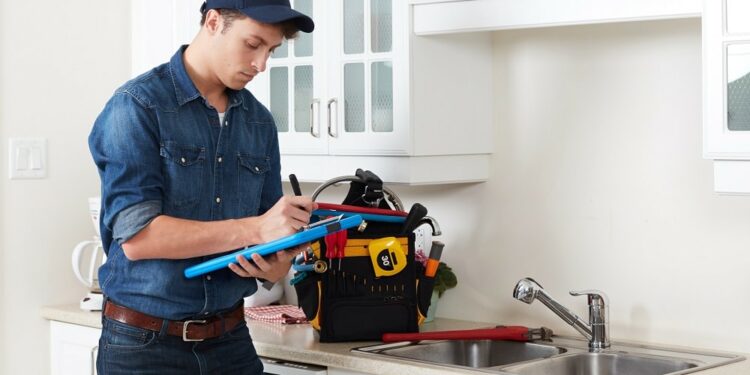After you’re set on a home to buy and before you actually purchase that dream home, you should always hire a professional home inspector to look at the home and make sure you’re not getting anything you didn’t sign up for.
Even if you’re dealing with the most honest seller in the world, there’s still a chance they aren’t aware of the home’s problems or financial standing.
Many homebuyers are just so excited to move into their new home that they forget to have a professional take a second look to make sure the home is in good condition and won’t need expensive repairs after the move-in date.
When it comes to figuring out the top home inspection deal-breakers and when to walk away after a home inspection, we have all the information you need to know!
1. Unpaid HOA or Condo Fees
If the sellers stopped footing the bill for homeowners association or condo fees, they actually get passed on to the new buyer. Always make sure you check dues on the property before signing the mortgage.
If the owner owes several months or even years’ worth of dues, you could be stuck paying a pretty penny for amenities you didn’t even use.
To make the purchase fair, you could always ask that the owner settle the dues or knock off money from the purchase price. Either way, they should be the ones paying any unpaid fees, not you.
2. Old Roof
Some would say that roofs are the lifeblood of your home. Think about it. Roofs protect your home from the elements and take the hardest beating from them. They need to be strong and resistant. They’re also really expensive to replace, costing from $20,000 to more than $50,000 for a brand new roof.
If the roof needs replaced and the sellers can’t knock off at least $30,000 on the purchase price, you may want to look elsewhere. You may even want to keep looking if the roof needs to be replaced at all.
The last thing you want to do is move into your new home and have to replace a roof. It’s good to know when to walk away after a home inspection, and this is one of those times.
3. Foundation Problems
Cracks, water damage and pests can all create significant structural damage, but so can years of weathering the elements. If the previous owners haven’t done the proper upkeep on the home, it may be at risk for structural damage earlier in its life cycle than homes that were properly maintained.
If your new prospective home appears to have foundation problems, that’s one of the major home inspection issues you should take as a sign to keep searching for your next home. This is a good time to realize when can you back out of buying a house.
4. Old Plumbing or Electrical
Old plumbing and electrical wiring can lead to some serious problems. Plumbing leaks can cause wood to rot and mold to grow, which can become extremely costly repairs. Old electrical wiring can become faulty and cause home fires, which can damage your entire home and leave you in need of expensive bills.
When purchasing a home, make sure you get a copy of receipts that state when the home’s plumbing and electrical systems were repaired or completely replaced.
Many home insurance companies won’t even insure homes with plumbing and electrical systems more than 50 years old. If you run into old systems, these are pretty big home inspection deal-breakers.
5. Poor Remodels/Upgrades
Poor remodeling can lead to bigger problems than just an eyesore. Depending on what was remodeled or upgraded, like a roof replacement, those jobs could lead to bigger problems in the structure and integrity of your new home.
Smaller remodels or upgrades, like a kitchen or patio, could just wind up driving you a little crazy and making you shell out thousands of dollars to get what you actually desire.
So, is it worth getting a better price on the home upfront for potential big problems in the future? We don’t think so.
6. Low Appraisal Value
The market can demand outrageous prices sometimes. Don’t forget that you’re not just paying for the home. You’re also paying for the school district and community its located in, proximity to the entertainment you desire and many more things.
Last but certainly not least, a low appraisal value should have you rethinking the home or, at the very least, negotiating the selling price.
If a certified home appraiser checks out the home and values it much lower than the asking price, you‘ll want to shop around the area to figure out what similar homes have sold for and what they’re on the market for.
7. Asbestos
Asbestos used to be a very popular material used in the home-building process. That was until it was found to be extremely harmful to humans. While asbestos in the ceiling and walls can be an extremely costly removal process, asbestos that occurs in the flooring of the home can be more easily managed.
The old and common popcorn ceilings are known to have asbestos, so be sure to have a certified home inspector check out your potential new home and relay the findings.
If asbestos is found in the home, you may want to run for the hills instead of trying to take it head-on.
8. Visible Water Damage
Water damage is one of the most expensive things to repair in homes because it’s usually pretty extensive and results in further damage, such as mold or rotting wood. That makes it one of the top deal-breakers for home buyers. If you or the professional home inspector spot any water damage, make sure you check it out further.
Small water stains could be a pretty easy fix. But, if that small water stain turns out to be something way bigger, the repair costs could easily break the bank. Or at least eat up all the savings you thought you had in the purchase price.
9. Mold
Signs of mold inside the prospective home should set off alarm bells in your mind. While some mold can be easily repaired, some can create extreme problems in the home that are both costly to repair and damaging to the home’s integrity.
10. Pests & Termites
Pests have their place in the world, but let’s hope they’re not making their home inside your prospective new home. These pests, such as mice, can chew through electrical wires and damage the structural integrity of your home, causing you to shell out a bunch of money to make the necessary repairs.
Termites are on an entirely different level than other pests. If not spotted and treated quickly after noticing a termite infestation, a home can suffer severe damage. But it may take years to create serious structural damage in your home’s integrity.





